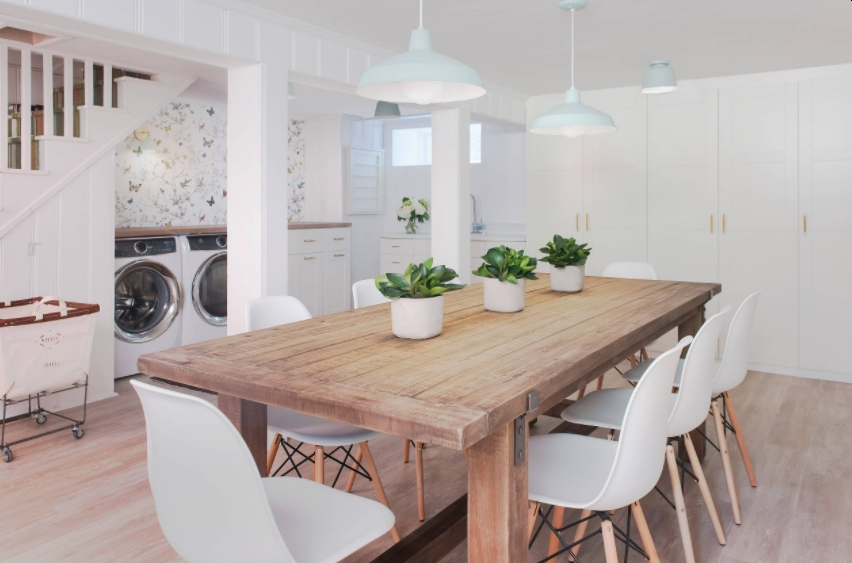Bleaching wood is a process that has been around for centuries. It was originally used to whiten stains on much darker woods, but today many people bleach wood to give it a clean appearance. To bleach wood, you should apply some amount of bleach or oxalic acid. Keep reading to get a step-by-step guide about how to bleach wood properly.

Why Should You Bleach Wood?
Wood is porous, and it absorbs liquid. It can take in stains from food or liquid spills, ruining the appearance of your piece of furniture or flooring. Bleaching is a chemical process that can reverse the damage and make your wood look new.

Step-By-Step Guide On How To Bleach Wood
Before you start, please consider materials you may need to bleach wood with no fuss:
- Cleaning and scrubbing pad (any type will work) for cleaning the wood surfaces
- Bleach solution and brush for applying the bleach solution on the wood surface (if using bleach and ammonia mixture)
- Soft cloth for wiping down all surfaces after bleaching. A soft, clean cloth is much better than a newspaper because newspapers contain lint that will scratch your wood furniture.
Prepare Your Wood Furniture Or Other Surfaces
Before you start bleaching, pull out all drawers and remove the hardware from your wood furniture. Open the doors and take everything out of your cabinets, too. If you are about to bleach wood floors, remove any furniture from the room and put down a drop cloth. You won’t want it to get bleached or damaged.
Clean Wood Surfaces With Any Household Cleaner
Clean your wood surfaces with a household cleaner to remove dust and grime. Use a broom or vacuum cleaner to thoroughly clean all surfaces, including the drawers and cabinets you removed earlier. Don’t use a towel because it might leave lint on your wood; just use kitchen towels or paper towels if necessary.

Apply Stripper With A Sponge Or Brush
Next, you want to apply a chemical stripper to get rid of any wood stains. You can use any cleaner at this point that can safely remove the stains.
If possible, it’s best to work bleaching in a well-ventilated room. Avoid any products containing bleach or other caustic chemicals since these products could damage your furniture and flooring.
Scrape And Sand Your Wood
Next, you need to scrape and sand your wood with fine-grit sandpaper to remove all the liquids from the wood surface that have been absorbed by the stain or liquid you applied earlier. Sanding can be a bit difficult because of the porous nature of wood, but make sure you get into all the corners so that you can remove as much as possible.
Apply Bleach, Repeat If Needed
Now that your wood has been sanded, it’s time for the bleach step. This process relies on oxygen to remove stains from your wood, so make sure you have good ventilation in your room with this step (open a window or turn on a fan). Then apply bleach to your wood surfaces with either a sponge or brush until the whole surface is covered. Wait at least three hours before moving on to the next step.

Wipe Down With Clean Water
Once your wood has been bleached, it’s time to wipe down your surfaces again with a clean, fresh towel. This step is very important because you want to see if the bleaching is effective. After all, this is the first time the wood will be in direct contact with oxygen. You may have to repeat this step and the previous steps if you see any signs of bleaching not being effective (new stains appear on your wood, for example).
How To Bleach Wood With Oxalic Acid
Oxalic acid is a chemical used to bleach porous woods, such as oak and pine. Before you start bleaching, you must apply your oxalic acid solution to the surface in a rough layer (don’t worry about it being perfect). The next step is letting it sit on your wood for at least one hour. After this time, scrub your wood with a nylon pad. Then the wood must be rinsed with plenty of clean water and dried thoroughly. After this point, you must sand the wood down before applying a stain or paint.

The Bottom Line
Actually, this process is pretty straight forward but it does take time. The first time you try it, you may have to repeat some steps and change your technique. In the end though, if you want a clean and bleached wood surface, the final result is well worth the effort.
FAQ
What Is The Best Way To Bleach Wood?
Can You Use Household Bleach To Bleach Wood?
This mixture will clean and disinfect the wood without damaging it but must be applied with caution not to weaken it further. You could always try using other bleaching agents such as hydrogen peroxide or chlorine bleach, which are safe to use on most hardwood floors and furniture.